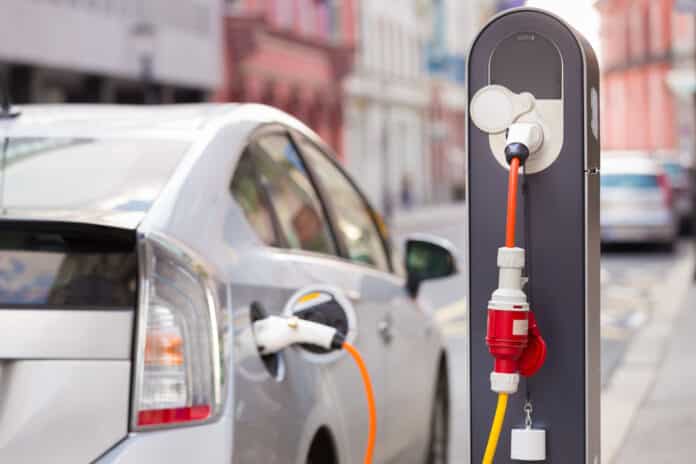
As the world starts to seriously address the challenges of climate change and the immediate need for carbon reduction there are many roads forward, and they are all paved with good intentions. Ambitious new pledges set the stage as countries determine the best approaches to achieve net-zero 2050 carbon emission reduction targets. Those targets are further supported and enabled by legislation and environmental accountability standards as a part of the growing Environmental, Social, and Governance – ESG – principles, which bring new metrics and add to the focus and action taken by companies across the globe, that all play important industry roles as they contribute to global climate solutions.
With these targets in mind, it is time to reflect on our plans to achieve them. To attain carbon emission reduction targets, one area that must get special attention is the transportation sector. In the U.S., transportation accounts for close to 30% of U.S. greenhouse gas (GHG), emissions. Yes, Americans love to travel and, of course, transportation is also the key to conducting the commerce that supports our lives and livelihoods and sustains economic growth.
As with most objectives, aiming high is laudable. America is already working to reduce the GHG emissions that contribute to climate change. But to achieve those objectives requires a level of planning that must reflect all the factors that will affect transportation transition timelines and their outcomes. Right now, it appears many of those factors, some obvious and others less so, are not being heeded. As lawmakers and public officials plan and propose policies and mandates, they must be willing to address the limitations of technology and transportation and, most importantly, they must ensure that we preserve access to reliable and affordable transportation and the range of available fuels, for decades to come.
Today, automakers are designing, building, and introducing new vehicle powertrains which are helping to drive zero emission solutions. For the most part, those new designs include electric vehicles (EVs) which, while they represent only about 2% of the US vehicle fleet today, are expected to grow substantially. However, as EV growth takes root there are also mandates being issued for the elimination of internal combustion engines (ICEs). Accordingly, automakers have begun to factor those mandates into their production planning, along with their understanding of consumer demand and even application of global ESG principles. These all have the potential to further accelerate the EV transition.
Yet, as some automakers and state officials set target dates to eliminate ICE production, there needs to be a recognition of the complexities of ICE to EV transition timelines. In fact, EVs and ICEs, their respective infrastructures, and the jobs and economic growth they provide, must continue to work in tandem to efficiently meet our transportation needs for decades, while we determine how quickly EV consumer acceptance and market penetration will grow. Among those complex issues are those impacting EV battery availability. According to a recent Bank of America Global Research report, there is the real threat of global battery supply for EVs running dry by as early as 2025, with global battery supply reaching a ‘sold-out’ situation between 2025-26, and with those shortages expected to intensify even further between 2026 and 2030. Additionally, consumer acceptance, convenience, charging infrastructure, vehicle price points, and even government intervention, including tax incentives such as the those proposed for the purchase of EVs in the just announced Manchin / Schumer reconciliation package, will determine the long term production pace, availability, and acceptance of EVs.
The Fuels Institute, an organization that conducts research and evaluates issues affecting the motor vehicle and fuels markets, recently held its “Fuels2022” meeting in Indianapolis where the issue of transportation decarbonization was discussed in detail. Last year, the Institute prepared a paper outlining a range of policy considerations to address as proposals are tabled to limit or ban the sale of ICEs.
As noted therein, multiple factors must be considered as decisions and policies regarding transportation modes are made.
Similarly, a recent research paper prepared for the Institute for Energy Law explains in detail the technical hurdles that policymakers must consider as they confront the stark realities and technical limitations of ICE to EV transition.
EVs are here and here to stay, and they will continue to hit the road in greater numbers, but at the same time, the ICE fleet technology must continue to advance. ICE fuel efficiency has improved significantly over the years. Advanced hybrid vehicle technology, combining both EV and ICE powertrains, along with the introduction of variable high compression engines, sophisticated fuel injection systems, and refining of cleaner high octane fuels and biofuels, will all result in even more efficient vehicles that will ensure the long term viability of the ICE. And that is good news as ICEs will provide a much needed transportation bridge while EVs and future transportation models evolve.
Simply put, that road which we mentioned is paved with good intentions, is not one lane; it is more like a multi-lane highway where EVs and ICEs must share the lanes for decades to come. Exit ramps for the ICEs are a long way down that highway, and in the meantime both automotive technologies will continue to advance. And while they do, they will support the transportation needs of motorists as they journey to their net-zero destination. As my little grandkids like to ask on a road trip, “Are we there yet?” My answer is simple: “No, kids, not yet, but don’t worry, we will get there.”
Michael J. Roman is Senior Fellow, American Council for Capital Formation; Member, Fuels Institute Advisory Board; and President, Certain Point Strategies L.L.C.






